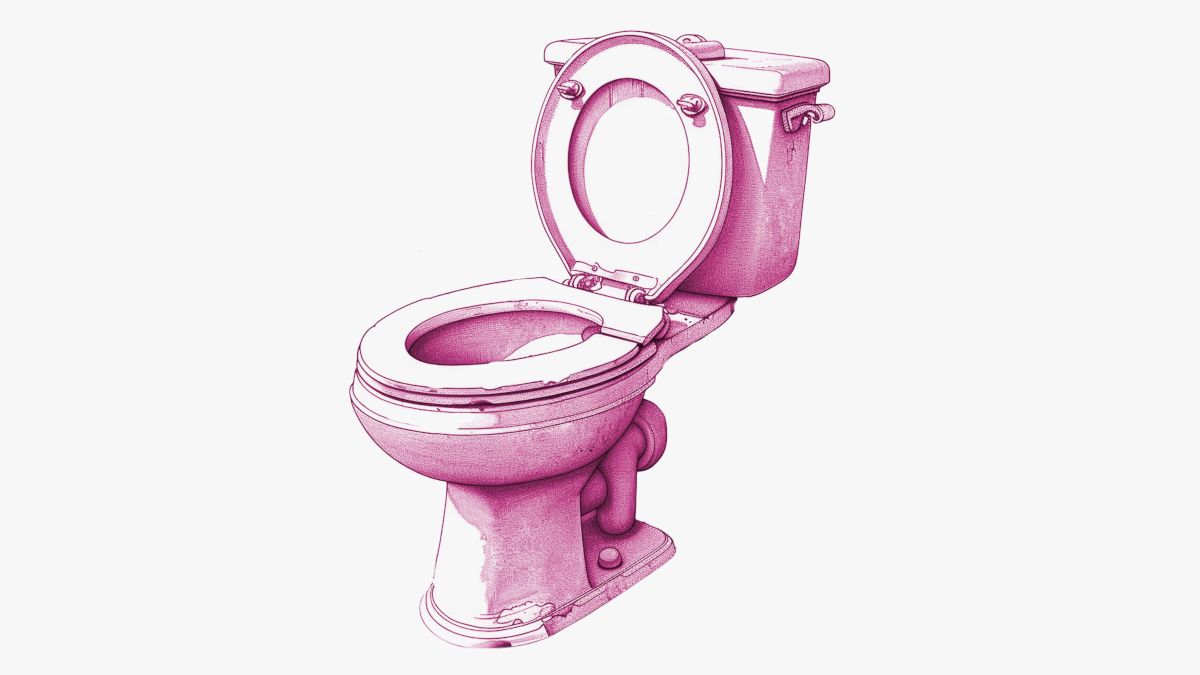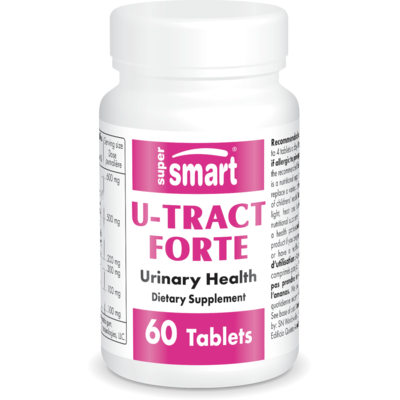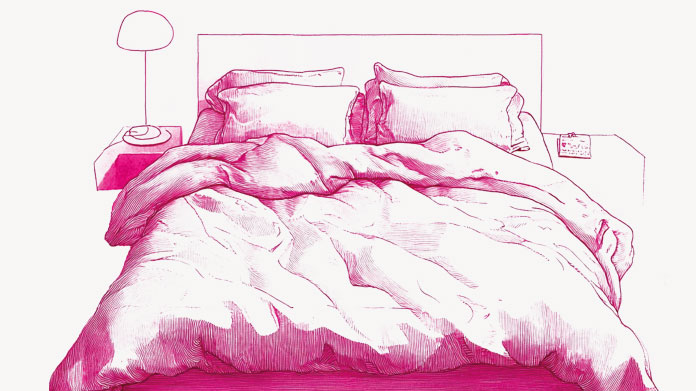Urinary incontinence: 5 home remedies
Urinary incontinence remains a taboo subject even though it affects far more people than you might think. SuperSmart reveals 5 key tips to help you control and live with this condition on a daily basis.

What is urinary incontinence?
Urinary incontinence is a symptom rather than a disease: it gives rise to the uncontrollable, involuntary loss of urine, both during the day and night.
It affects nearly 30% of older women and 15% of older men, though it is not a consequence of normal aging. It is usually caused by a known physical disorder and can be treated, or if not, controlled.
Different types of urinary incontinence and their symptoms
There are 4 types of urinary incontinence:
- stress incontinence. This is the most common form of incontinence in women. It results from a sudden increase in pressure inside the abdomen, usually caused by physical exertion, sneezing, laughing or coughing, and is evidence of weakening of the pelvic floor muscles;
- urge incontinence. Sometimes called ‘overactive bladder’, this is characterised by the uncontrolled loss of a reasonable amount of urine, following a sudden, overwhelming need to urinate. It is mostly linked to chronic disorders that lead to a failure of the urination control center in the frontal lobe, though it can also affect children and young adults;
- overflow incontinence. Here, urine leakage occurs because the bladder is too full. This may be because of weak bladder muscles (due, for example, to a neurological disorder or advanced diabetes) or an obstacle to emptying the bladder (such as prostate problems in men);
- functional incontinence. This occurs when there is insufficient time to make it to the toilet. It may be caused by mobility problems, physical or mental disability, dementia...
Some people suffer from more than one type of incontinence - this is referred to as mixed incontinence.
5 natural remedies for tackling urinary incontinence
1) Exercises for strengthening the perineum (Kegels)
Our predecessors had no knowledge of Kegel exercises but they were already advocating certain exercises for improving perineal tone (pelvic floor muscles), able to stop the flow of urine.
The principle is simple: you contract these particular muscles for 1 to 2 seconds (as if you’re holding in urine or a bowel movement), then relax for about 10 seconds, and repeat this 10 or so times, 3 times a day, for several weeks. Over time, you can increase the period for which you contract the muscles to 10 seconds, and in this way, you’re able to reduce the symptoms of incontinence.
To succeed with this home remedy, it’s best to start the exercises lying down, knees bent and slightly apart, gradually progressing to doing them in a sitting, and finally standing, position. Seek advice from a physiotherapist if necessary.
Which type of urinary incontinence is this for? Primarily stress and overflow incontinence. Kegel exercises are particularly recommended for women during labour and following childbirth (pelvic floor rehabilitation), for men who have undergone prostate ablation, and for the elderly whose pelvic floor muscles have lost tone over time. As a bonus, they may improve sexual pleasure in women.
2) Keep an occasional ‘bladder diary’
To get a better idea of the situations likely to cause incontinence, and to reduce symptoms, start a ‘bladder diary’.
For several days, write down the time at which you urinate, specifying whether it was urgent or not, if you had any urine leakage, and if so, what prompted it (coughing, exertion, opening the toilet door, etc). Finally, write down the type and amount of fluid drunk during the day.
A tip for making this home remedy work: don’t try and keep the diary every day. It’s enough to fill it in at regular intervals, so that you can both identify ‘risky’ situations and any habits you need to change, and measure your progress.
For which type of urinary incontinence is this most suitable? All of them: a diary allows you to identify the type of incontinence affecting you. If you then decide to consult a health professional, it will help them select the right treatment.
3) Reduce your intake of ‘high-risk’ foods
Several foods increase the risk of incontinence because they irritate the bladder and encourage it to contract:
- citrus fruit (oranges, grapefruit, mandarins…);
- chocolate;
- tomatoes;
- spicy food;
- sweets (including those containing sweeteners);
- alcohol (which also reduces the brain’s control over bladder muscles);
- coffee and all caffeinated drinks, such as tea and cola.
A tip for success with this home remedy: give up the foods that you can easily do without altogether, and gradually reduce your intake of the others. If you drink copious amounts of coffee a day, it’s best to reduce your consumption gradually, starting with a ban on any coffee past 3pm, and finding a caffeine-free substitute (there are some fantastic herbal teas and decoctions around).
Which type of urinary incontinence is this best for? These foods exacerbate all types, but especially functional incontinence.
4) Take advantage of cranberry
In America, cranberry has long been associated with helping those suffering from urine leakage.
Some of the fruit’s components (including quinic acid) seem to prevent bacteria from adhering to urinary tract walls and multiplying there (1-2). As a result, they may help reduce the risk of the urinary infections which often go hand in hand with urinary leakage. This infection risk is greater in individuals who regularly suffer from incontinence as they tend to drink less, making their urine more concentrated and promoting bacteria. A vicious circle!
For the best chance of success with this home remedy: choose a urinary health supplement containing high-quality cranberry (such as U-Tract Forte, in which the cranberry is combined with other synergistic ingredients), and take it just before, or two hours after, a meal, making sure you drink a normal amount. Ask your pharmacist or phytotherapist for advice if necessary.
Who is this for? Those at risk of urinary infections (primarily women) and those who suffer from overfull incontinence (the accumulation of stagnant urine increases levels of bacteria and thus the risk of infection).
5) Eat more dietary fibre
Constipation aggravates all urinary disorders, especially incontinence. Two mechanisms are responsible: the effort to defecate weakens the pelvic floor muscles, and stools stuck in the rectum puts pressure on the bladder.
Over time, this pressure exacerbates involuntary urine loss and increases the frequency of urination. It’s therefore advisable to take effective measures to prevent constipation, the best of which is to add more fibre to your diet: green vegetables (asparagus, Brussels sprouts, lettuce, spinach …), fruit (mangos, prunes, bananas), wholemeal starchy foods (wholewheat pasta, brown rice, psyllium …)
For this home remedy to work, it’s best to: start by adding small amounts of fibre, increasing it gradually to improve your tolerance. Give it a chance to work: the effects may take a month or two to be felt once you’ve made the change to your diet.
Who is this for? Anyone who suffers from urine leakage will benefit from consuming more fibre (particularly soluble fibre which softens stools), but especially those who are overweight .
SuperSmart ADVICE
References
- Bioactive compounds in cranberries and their role in prevention of urinary tract infections. Howell AB. Mol Nutr Food Res. 2007 Jun;51(6):732-7. Review.
- Reduction of Escherichia coli adherence to uroepithelial bladder cells after consumption of cranberry juice: a double-blind randomized placebo-controlled cross-over trial. Di Martino P, Agniel R, et al. World J Urol. 2006 Feb;24(1):21-7.
Keywords
5 Days
Availability of quality health…
Availability of quality health supplements and it's wide variety is impressive. Ordering is seamless and shipping even during the holidays is well streamlined.
Mohamad Hussein
19 Days
A Product worth waiting for when not…
A Product worth waiting for when not available and then arriving as a surprise!
DOMINIC
20 Days
On time shipping
On time shipping
GEORGE Verne
22 Days
Ordering was easy and the product was…
Ordering was easy and the product was delivered with no problems. Appreciated that I was notified when it would arrive. Thanks!
MascarC
28 Days
Great customer service - responsive …
I ordered from them and my item was unavailable for sometime. I was super happy when they reactivated my order and shipped my item which arrived very quickly. Great customer service.
Ruth Rueter
29 Days
Super fast shipping
Super fast shipping
Donald Borling
32 Days
Reputable companysearch and the number of…
The research and the number of selection of products.
NAKHJAVAN Shervin
45 Days
The Anti Aromatase is a great product
The Anti Aromatase is a great product. You just need to have constant inventory. Recently this product has been out of stock.
GEORGE Verne
46 Days
Great help on chat
Great help on chat. Knowledgeable and friendly.
Jason Argos
50 Days
Customer service was fast and friendly.
Customer service helped to stop the transaction process of the subscription. I appreciated that.
Greenie
50 Days
I order here due to the high quality of…
I order here due to the high quality of the products and the quick delivery of items - thank you
Barbara J
52 Days
SuperSmart's Eye Pressure supplements: highly recommended!
I purchase SuperSmart's Eye Pressure supplements regularly for over 5 years, and gotta say they are truly a wonderful product for my Glaucoma. Highly recommended if you have eye pain from your Glaucoma.
D. Martinez
56 Days
Quick service
Quick service
MONELL
57 Days
Speedy service.
Speedy service.
ROSENTHAL Marvin
60 Days
Clear website- Efficient
Clear website. Excellent search engine and fast delivery!
Mohamad Hussein


